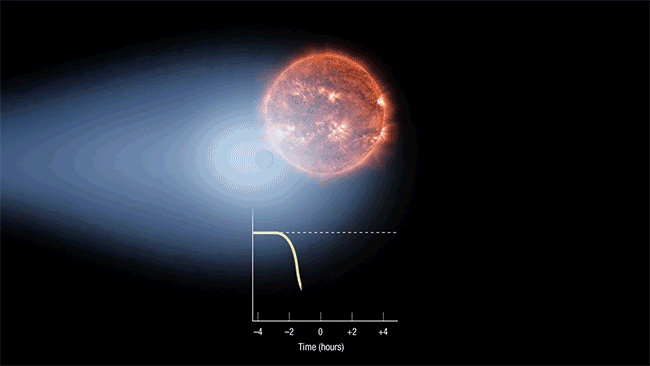Comets and exoplanets capture the fascination of many astronomers. Now, comet and exoplanet enthusiasts may converge as a new era of exoplanet discovery emerges.
The speculation surrounding planet Gliese 436b may rest as astronomers confirm the existence of a comet tail trailing from the planet’s atmosphere. Gliese 436b measures similar in size to Neptune, however orbits much closer to its red dwarf host star in comparison. With an orbital period of just 2.6 days, this Neptune-like planet is quite hot, resulting in the dissipation of the atmosphere into a comet tail.
The tail is composed of hydrogen, identified by its unique Lyman-alpha wavelength, and blocks nearly 50% of its host star’s light! However, when viewed on the visible light spectrum, only 1% of starlight is blocked. This large contrast between the visible and UV light illustrates the enormity of the hydrogen comet tail compared to the planet itself.
Though this is not the first exoplanet observed with a comet tail, the size of the tail in comparison to Gliese 436b certainly makes it unique and sheds light onto the branching field of exoplanet discovery.
Keep looking up!
– Julia
(Source: Sky and Telescope, www.newsledge.com)



